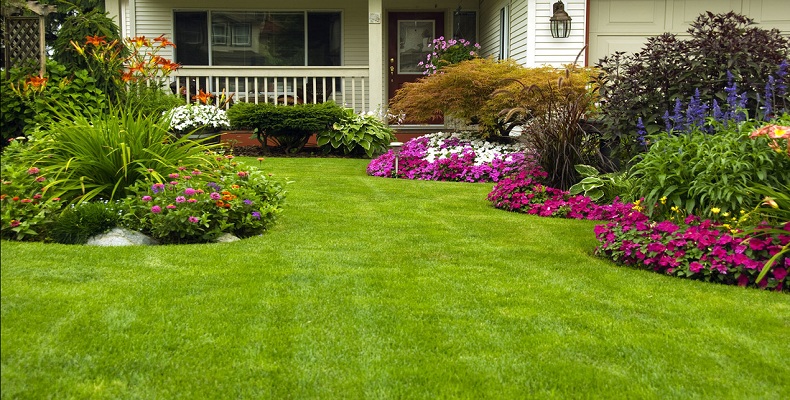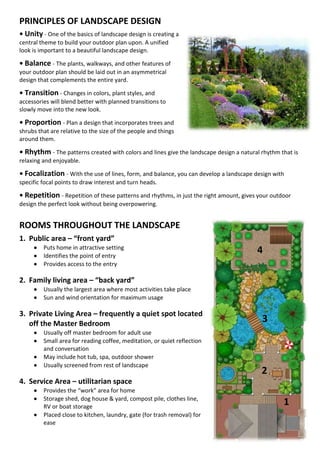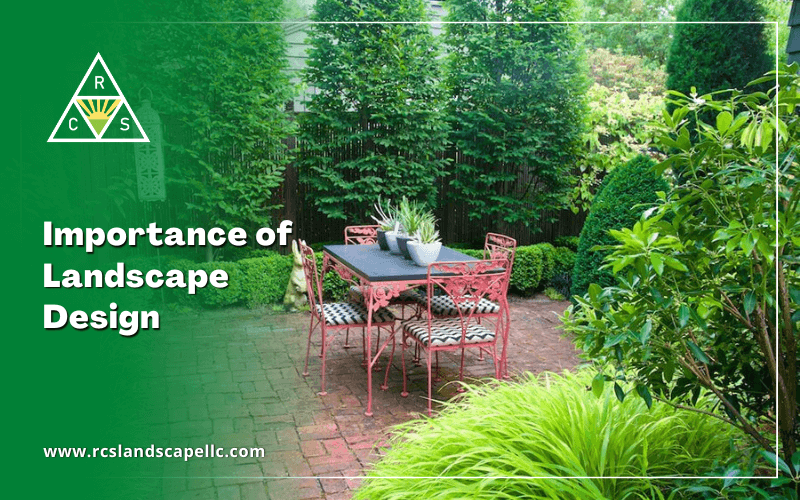Not known Details About Landscape Design
Not known Details About Landscape Design
Blog Article
The Ultimate Guide To Landscape Design
Table of ContentsThe Main Principles Of Landscape Design The Facts About Landscape Design UncoveredIndicators on Landscape Design You Need To KnowLittle Known Facts About Landscape Design.The Definitive Guide for Landscape Design
Official design motif. Credit: Gail Hansen, UF/IFAS The lawn is an extension of the home where a selection of activities happen. A yard can typically be split right into three areas: public (the front backyard), exclusive (the backyard), and service (generally the side backyard). The area of activity areas depends largely on the kind of location, the dimension of area needed, the sort of task, and the preferred proximity to various other activities and structures.The outdoors wall surface of your home often works as the initial wall or beginning factor of an exterior space. Inappropriate usages must be separated, and related tasks, such as food preparation and eating, need to be put with each other to make the yard extra efficient and satisfying. When making use of hardscape to produce rooms, utilize construction material similar to that used in your house for connection from your home into the garden.
Linked spaces. Credit Rating: Gail Hansen, UF/IFAS Utilizing comparable hardscape features and repeating plants draws the eye around the yard.
The Ultimate Guide To Landscape Design

For psychological comfort plants are utilized as physical or suggested obstacles for personal privacy and security. Physical obstacles block both the sight and accessibility to a space and include fences, walls and plant hedges. Implied obstacles, generally reduced growing plants, obstruct access but not the sight (Number 9). Various other functions of plants include cleansing the air, avoiding erosion and soil loss, preserving wetness in the dirt, and returning organic matter to the dirt.
Physical and suggested barriers. Credit Score: Gail Hansen, UF/IFAS For these factors, the kinds of plants to be made use of (such as trees, bushes, or groundcovers) must be selected in the onset of preparation (Landscape Design). Plant types are selected for their functional capacities to make sure that their future function and called for space can be thought about at the exact same time

Getting The Landscape Design To Work
Each plant mass is in front of, behind, or following to, another mass. Debt: Gail Hansen, UF/IFAS Repeating plants within a mass and duplicating masses with similar plants links the yard together. The individual plant attributes should be thought about to efficiently layer and mass plants.
All plant make-ups start with the major structure plants, the big, mostly evergreen history plants-such as the trees and large hedges. These plants different or enframe spaces, control the size of the space, and offer the beginning point for picking the proper features of the 2nd layer, midground plants, for massing and infill.
Crucial points in the yard ought to be highlighted by the use unique plants, distinctive frameworks, or garden ornaments. Marking limits or entrances to rooms can be finished with gateways, arbors, and steps, or via the use of one-of-a-kind and vivid plants. The form and/or design theme of the yard will typically assist identify the essential points and how they ought to be highlighted.
Other important areas in the backyard are focal factors, which is used to aesthetically arrange view website a landscaped location. Various point of views or perspectives can disclose various structures in the landscape that might need a variety of focal points.
The Buzz on Landscape Design

Plant forms. Credit Report: Gail Hansen, UF/IFAS After form, appearance is the next leading attribute of a plant; crude, tool and fine textures can be utilized for comparison and emphasis in the landscape.
The pleasurable scent of plants, the audio of wind in the trees, the noise and structure of water, and the shades and appearances of sculptures, pots and garden furnishings all include in the experience of the yard. One detail that is often forgotten is the result of light on the aesthetics of the plants.

Landscape Design Things To Know Before You Buy
It is essential to recognize the ultimate mature dimension of plants so they can be put in the right place and spaced properly when they are mounted. Giving plants room to expand is a challenge since the common mature size is usually based upon optimum growing problems and the ecological conditions of a website may create view a plant to enlarge or stay smaller.
Report this page